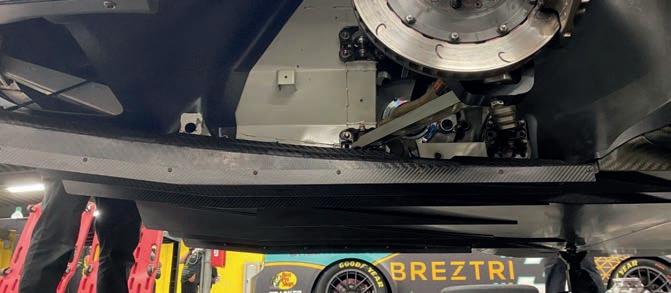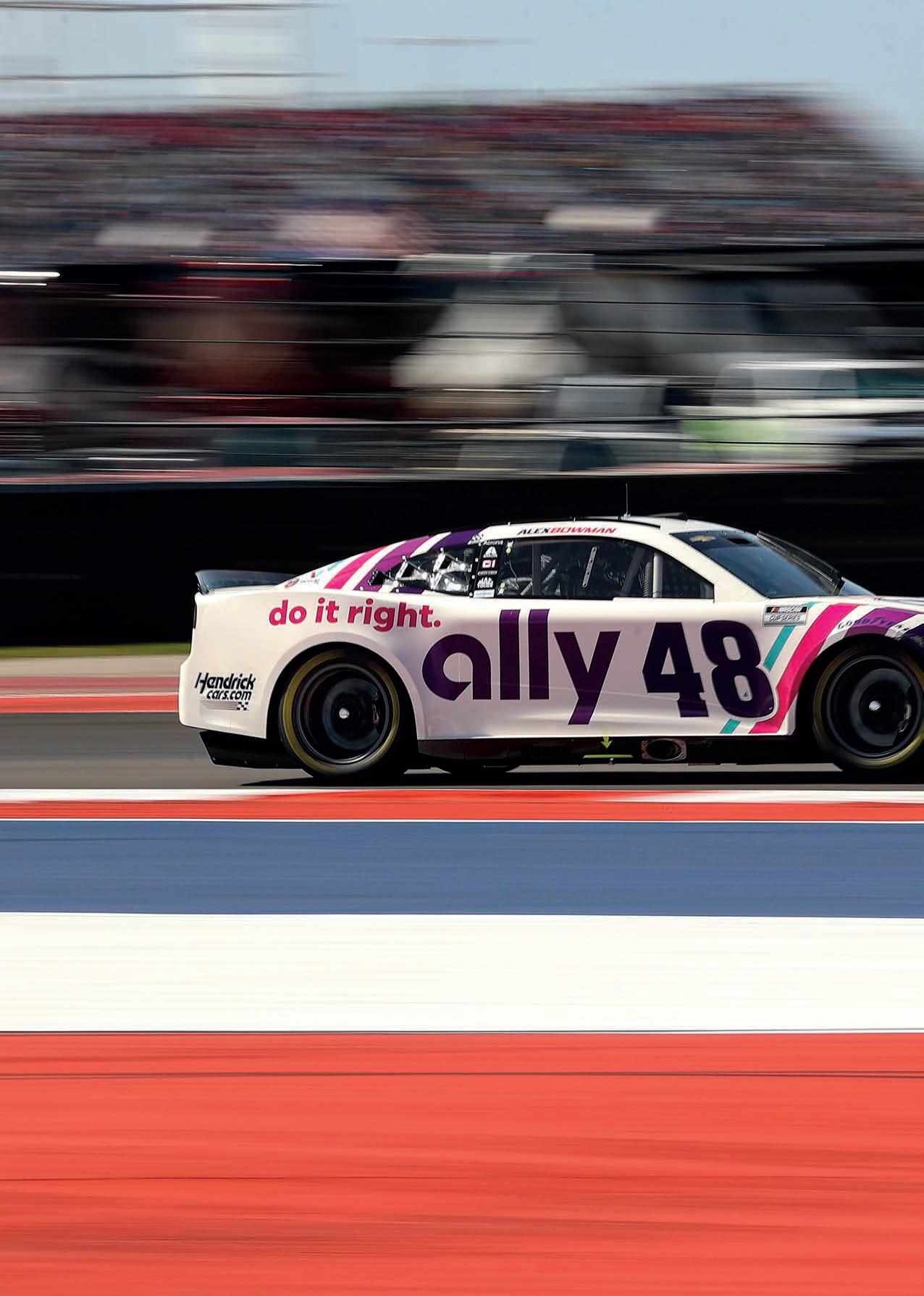
15 minute read
NASCAR
Rapid prototyping
The introduction of NASCAR’s Next Gen racecar has been hailed a success, but its early development was a hot and bumpy road
By DR ERIC JACUZZI AND CHRIS POPIELA
Getty NASCAR’s Next Gen vehicle has been an incredible success on track, with an unprecedented 17 diff erent winners and numerous thrilling races over the 2022 season. While a great year was certainly hoped for, such an outcome was far from certain in mid-to-late 2021 as teams began testing their own cars.
As could be reasonably expected with the debut of a brand new car, issues began to appear that were not seen during NASCAR’s own prototype testing. This is the story of the race to fi x some of the most concerning issues before the new car hit the track, with high hopes of delivering one of the best seasons in NASCAR’s recent memory.
Prototype 1
NASCAR’s on-track testing approach with the Next Gen car extended through much of the early part of 2021, beginning with a two-day test at Richmond in March. The new vehicle, dubbed Prototype 1 (P1), was the initial platform designed to evaluate all the new systems on the car. But, by the time of the test, most of P1 was already obsolete as the design was rapidly evolving, so it was decided to advance the design and build a new vehicle, Prototype 3 (P3), which skipped over an anticipated evolution of P1. This car was run initially at Texas in May and then for the remainder of the NASCAR testing schedule until team testing began.
Cut to September 2021, where eight teams participated in the inaugural organisation test of the Next Gen at Daytona.
By the time of the [first] test, most of [Prototype] 1 was already obsolete as the design was rapidly evolving, so it was decided to advance the design and build a new vehicle, (P3), which skipped over an anticipated evolution of P1

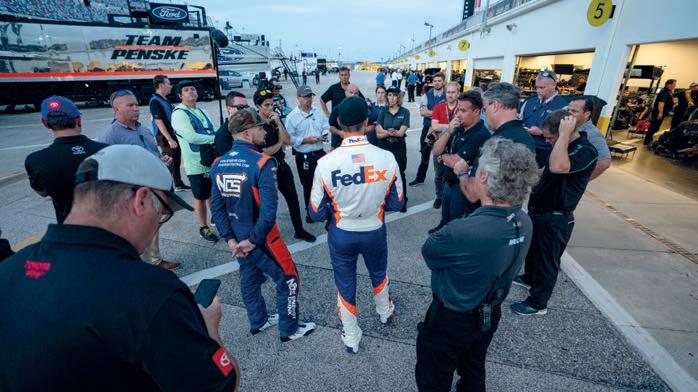
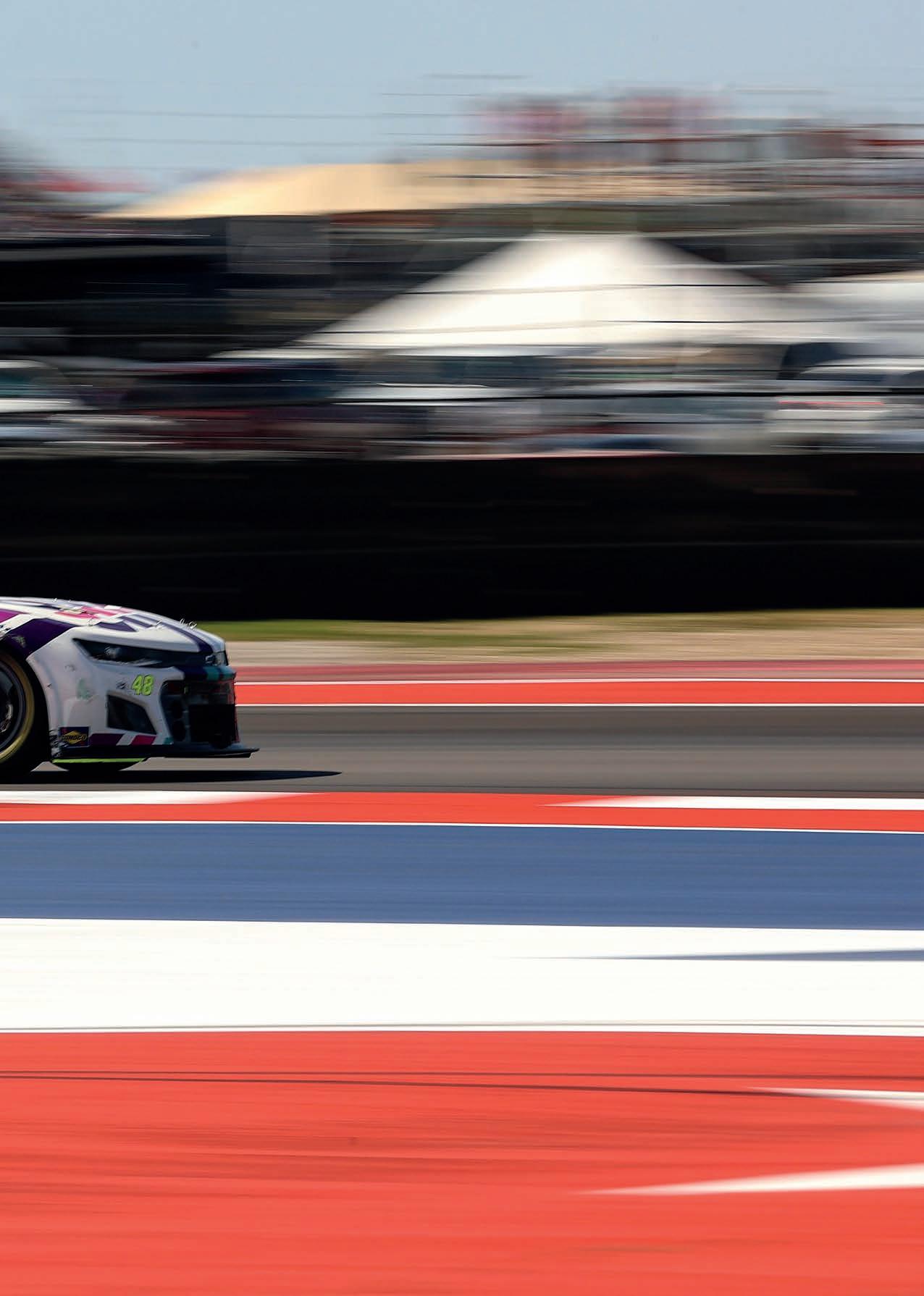
Drivers worked closely with the engineers to iron out the unexpected consequences of a rapid design and development process. This is Figure 1, debriefi ng at Daytona Next Gen test in September 2021.
In the humid Florida heat, high cockpit temperatures were a universal complaint from the drivers. With its heat, humidity and full throttle lap, Daytona represents a tremendous challenge to keep the cockpit cool at the best of times, but the situation appeared worse.
Aside from the heat, drivers expressed some concern that the car seemed to be erratic with changes in ride height. This was due to attendant aerodynamic balance changes, as well as the car impacting the damper travel limiters that had been implemented to limit ride height.
Leaving the test, the NASCAR R&D team knew time was running out to make the required changes before the 2022 season, and immediately started addressing these issues.
Cockpit temperature
During the first day of testing at Daytona, ambient temperatures recorded inside the cockpit were significantly higher than those drivers were accustomed to with the Gen 6 car. Indeed, some areas of the cockpit were too hot to touch at times during a test run. These areas included the pedal box, shifter and even the rollcage bars at times.
On the exterior, drivers were noticing intense heat when sticking their hand out the left side window net (a usual approach to cool themselves when coming in from a run), as well as heat coming out of their helmet air conditioning units.
This was a cause for alarm as most of the runs that day were under 30 laps and ambient temperatures were not at the upper reaches of those expected in an average season.
NASCAR and the participating teams huddled up afterwards to discuss different ways to eliminate heat from the vehicle. One of the main focusses was the long exhaust pipes that travelled along the sides of the vehicle and underneath the driver. Different approaches were taken to reduce heat here, including cutting out portions of the floor underneath the exhaust pipes. Unfortunately, not much testing was performed as rain spoiled much of the second day of the test.
With no drastic changes in the cockpit when comparing a Gen 6 vehicle to the Next Gen, NASCAR was convinced any contributing factors to increased temperatures were coming from outside the cockpit.
To determine what was contributing to the heat issues, NASCAR constructed a thermal model of the car designed to simulate the various heat sources from the engine and powertrain. This is shown in figure 2. A glaring issue was the propagation of both exhaust gases and expelled transaxle heat via the driveshaft tunnel. This phenomenon was due to the existence of a low-pressure zone in the under-bonnet region since the front wheel wells and engine bay are not enclosed, as they are in a traditional sportscar.
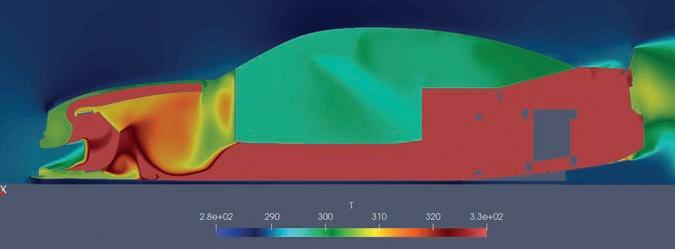
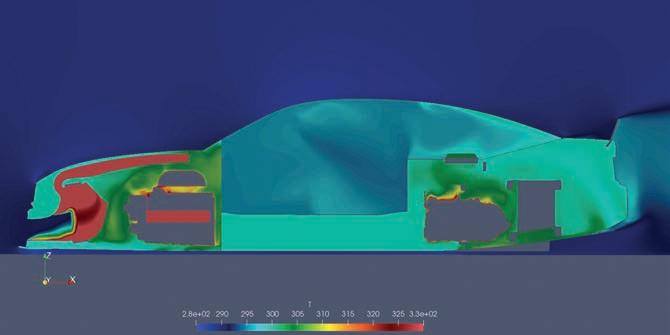
Fig 2: Centreline slice of the initial thermal analysis of the Next Gen (top) vs final package (lower)
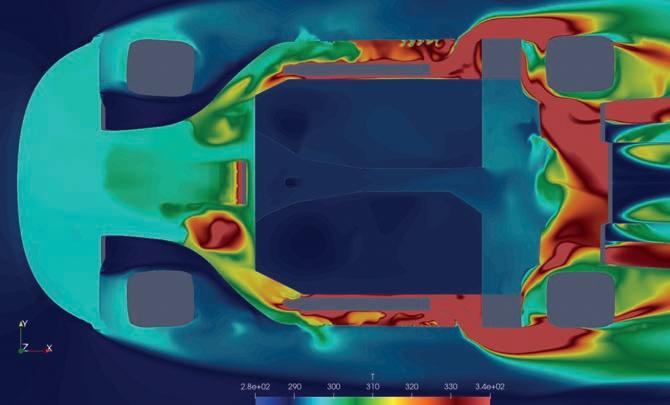

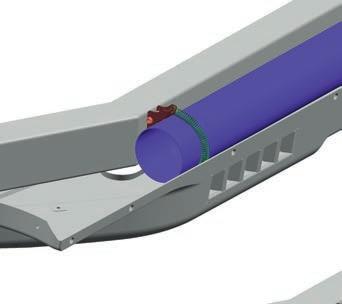

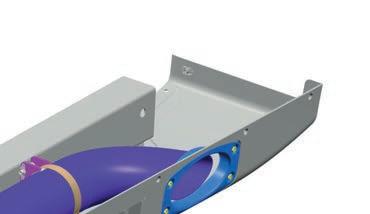

This was done to make working on the car more compatible with the processes NASCAR crews were used to with the Gen 6, but the low-pressure gradient it created from the front to the rear of the car resulted in heated air being drawn forward through the driveshaft tunnel.
A two-pronged approach mitigated this eff ect: adding a central NACA duct through the fl oor into the driveshaft tunnel and creating exits at the rear of the car to draw out heated air. The fl oor duct helps push warm air down the driveshaft tunnel and out through the exits at the rear. These modifi cations resulted in a small loss of total downforce and roughly four per cent forward balance shift.
Shorty pipes
Another issue was the length of the exhaust pipes down the side of the vehicle. With long pipes, the exhaust plumes were being drawn into the rear wheel wells and, again, forward through the driveshaft tunnel. A switch to a shorter exhaust pipe and an earlier exit helped dissipate much of the heat going underneath the cockpit and conducting into the chassis. Although the short pipes showed gases being ingested into the rear of the car, it was much less than the long pipes in terms of heating, due to their mixing with outside air before ingestion. Figure 3 graphically shows the diff erence between the long and short exhaust plumes.
Figure 4 shows the design detail of the long and short exhaust pipes, as well as the triangular cut outs in the bottom of the sills / rocker boxes added to help introduce air around the short pipes.
However, even with these changes cockpit temperature investigations using FLIR cameras and thermocouples showed that not only were cockpit temperatures increasing, but they were also stagnant, with no signs of heat evacuation.
Traditional ways of cooling the cockpit, such as the mandated double NACA duct on the right-side window opening and open leftside quarter window NACA were ineff ective.
After further investigation, it transpired hot air exiting from the radiator / oil cooler through the bonnet vents was being ingested on both sides of the cockpit. This hot air was found to be attached to the vehicle from the a-posts, all the way down both sides, for all three manufacturers.
This was not observed during NASCAR’s own prototype testing, as a generic body and louvre design was used, with the latter located more inboard and further forward.
Due to these fi ndings, a fully sealed rightside window was mandated at all tracks, and the mandated open left-side quarter window NACA duct was removed. Another change made was the removal of the left side a-post window net. This was initially installed for safety purposes to protect the driver from debris entering the cockpit and was used throughout NASCAR’s Gen 6 era. Instead, this area was closed off with a permanently installed triangular polycarbonate window known as the a-post defl ector, shown in fi gure 5. This simple piece lowered the temperature around the driver by roughly 10-15degF by reducing the amount of hot air ingestion from around the a-posts.
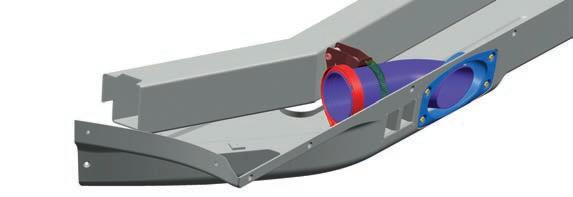
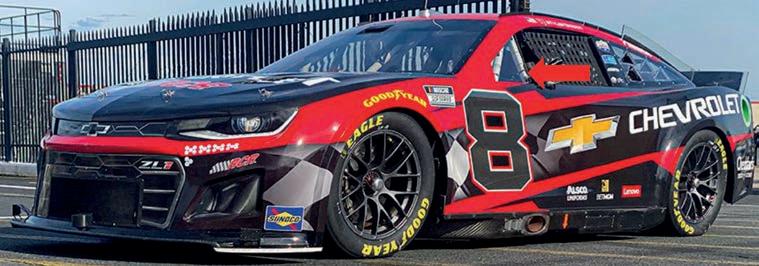
Fig 4: Long and short exhaust pipe designs, with the triangular cut out visible ahead of the short pipe
Aerodynamic eff ect
Issues still existed on how to eff ectively introduce ambient temperature air into the cockpit though. After numerous iterations on diff erent areas of the vehicle, NASCAR settled on a driver cooling duct located on the upper
right side of the front windscreen and slots in the back glass, as shown in figure 6. The driver cooling duct has two circular openings, one to introduce air directly into the cockpit and the other with a hose attachment that leads to the driver’s foot box area. This significantly increased airflow into the cockpit and, at the same time, cooled the pedal box.
During competition, the driver cooling duct must not be obstructed. Nor the rear window slots, which also introduce airflow into the cockpit, apparent in figure 7.
Aerodynamically, the driver cooling duct added a small amount of drag on the vehicle while the rear window slots caused the vehicle to gain a large amount of rear downforce and drag. Other areas that were investigated to help airflow into the cockpit, including the top of the greenhouse, had a significantly negative aerodynamic impact.
The valuable lessons NASCAR learned from the cockpit heat reduction programme will eventually make their way into other series in NASCAR.
Ride height sensitivity
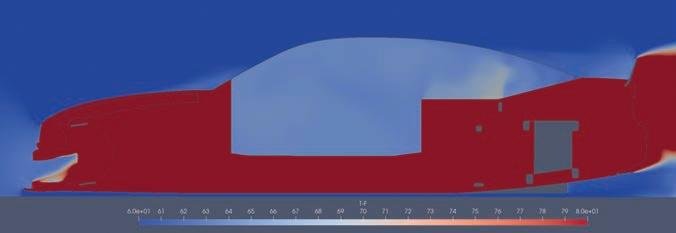
The decision to use a full aerodynamic floor was a first for NASCAR, and was developed over a year and half, with thousands of CFD runs and approximately 100 hours of testing at Windshear, Inc. One aspect of its performance that is misleading from CFD is its precise behaviour in traffic.
When performing CFD simulations of one vehicle following another, the two vehicles are set at a particular ride height and the flow field is computed. It is then possible to draw conclusions on the expected deficit a trailing car would experience. What this approach does not account for, however, is the effect the reduced aero load has on the suspension and, consequently, the ride height of the vehicle.
Like all ground-effect vehicles, the Next Gen car craves a certain proximity to the track surface that is set by teams in single car running. The downforce of the car pulls the car down to a height that is calculated to result from the effect of spring compression or ride height limiters. NASCAR teams previously employed rigid polyurethane or rubber bump stops that controlled the precise body ride height under load, but these were outlawed with the Next Gen. As a result, the ultimate stop for damper travel became a small, harsh stop on the damper shaft, making damper springs the aerodynamic platform control.
This is not a problem in single car running but, when in traffic, the reduced energy airflow not only reduces the downforce on the trailing car, but also increases its ride height due to the decrease in loading. This further reduces downforce, with most of the loss occurring on the front of the car.
It was unclear how dramatic this effect would be under race conditions, but it proved to be pronounced when felt by the drivers in traffic. In studying the aerodynamic qualities of the car as it moved through heave and pitch, it was obvious that the rear of the car behaved in a largely similar performance envelope. The front, however, built downforce up to about an inch from the ground but then it began to stall. This led to larger aerodynamic balance changes as the rear of the car made constant downforce, while the front increased with proximity to the ground.
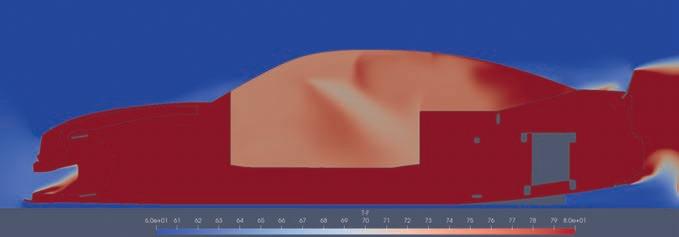

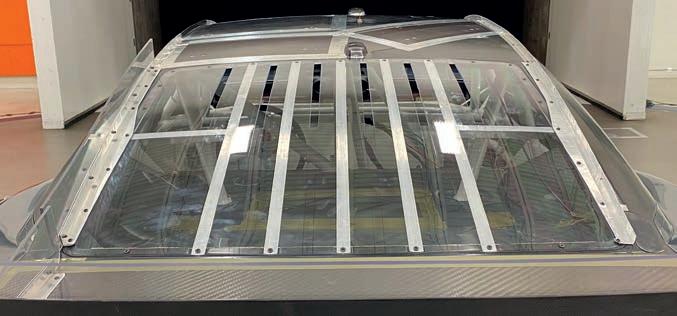
Fig 6: Windscreen driver cooling duct (top) and rear window slots help cool the cabin but come with a drag penalty
Baseline
Full rear window slots
Fig 7: Centreline slice showing the differece the rear window slots made on cockpit temperatures
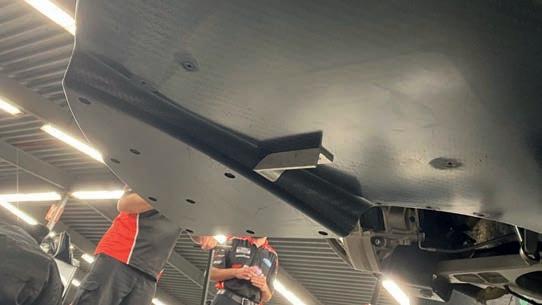
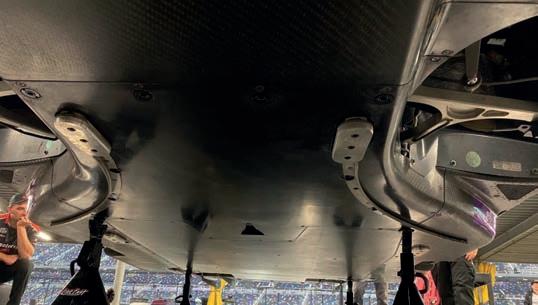
Fig 8: So-called splitter stuffers helped flatten the lift coefficient vs ride height for the car Fig 9: Engine panel strakes helped regain lost downforce. Note central tunnel NACA duct visible
Fig 10: Extended carbon skirts on the outer walls of the diffuser tunnel also re-captured some of the lost downforce
Now, some of this could have been dealt with using aerodynamic practices more akin to a GT car, however, the ‘stock’ car appearance remains an important consideration for NASCAR, along with a general reluctance to add any pieces that could become track debris.
In-depth review of the splitter behaviour in heave from both CFD and experimental results showed a gradual increase in pressure coefficient on the lower section due to ground effect. This led to investigating whether disrupting the flow in this area would yield the desired results in CFD.
Ultimately, the addition of the splitter stuffers, shown in figure 8, nearly flattened the lift coefficient vs ride height for the car, which was immediately noticeable to drivers on track. To regain some of the lost downforce, centrally-mounted strakes were added forward of the floor centre (figure 9) and the diffuser outer tunnel walls extended downward with ¾in carbon skirts (figure 10).
An interesting by product of this change was that rather than maximum downforce occurring with the nose of the car near the ground, it occurs with the nose up and the rear squatting. This arrangement allows the maximum air volume to reach the diffuser, creating peak downforce for the car.
Engine cooling
A further challenge that appeared early on during the season was that the OEMdesigned cooling systems did not have adequate airflow at shorter tracks and road courses. Because the manufacturers build the engines and have years of data on operating them, there was no NASCAR requirement on airflow through radiators. This flow is measured behind the radiator core by anemometers and reported as velocity ratio (VR), which is the air speed through the radiator divided by the ambient air speed.
This issue first appeared at the Clash at the LA Coliseum, which was a 0.25-mile event for which the cars were not designed, as it was announced after the Next Gen was being built. Saturday’s initial practice saw vehicles running on track for just a few minutes, returning to the pits outside the stadium and then driving back to the entrance of the tunnel to wait to enter again. This led to steadily climbing engine temperatures due to low airflow and heat soak.
For race day, NASCAR agreed to allow the manufacturers, if they chose, to remove some, or all, of their radiator exit louvres on the bonnet to coax more air from the radiator. That appeared to work as there were no heatrelated issues during the race.
But concern began to rise beyond the early oval events that road courses may also pose a problem. Teams struggled early on with deciding how much protection from debris was required for the new car, which resulted in some cars overheating at Fontana. Teams quickly realised that the upcoming Circuit of the Americas race would pose a legitimate concern for temperatures, without debris even factoring in. As a result, NASCAR and the manufacturers agreed to implement the option to declare an extreme cooling package specific to each make that could be fitted prior to the race weekend. Mirroring the Clash, this often involved removing obstructions in the duct exit, or increasing overall exit size in the case of the Toyota.
For the 2023 season, NASCAR implemented a minimum VR requirement for the vehicles of 0.1, meaning that with no obstruction behind the radiator or removal of louvres the cooling system must meet this requirement. In some cases, this represents a nearly 50 per cent increase in VR compared to the 2022 designs. This increased capacity is mainly achieved through larger and more efficient exits through the bonnet for the radiator flow.
It was also agreed between NASCAR and the manufacturers that there will be no concession for modifying cooling systems next season. The only option is to pit the car and cool the engine if required. It is anticipated that the new regulations will address this issue for the 2023 season.
The Next Gen car continues to evolve as it accumulates race mileage under its belt. Continuous improvement of component durability and cost is a daily occurrence, but frantic re-development will hopefully now be just a memory. NASCAR’s 2023 Garage 56 entry will now be the next major event on the horizon for R&D, along with a battery electric vehicle concept to represent a possible demonstration series in the 2024 season.
Though the hectic months prior to the launch of the Next Gen car will not be missed by the team at R&D, lessons learned in preparing the car for racing will live on. We are now looking forward to showing NASCAR to the world in France in 2023, and will be excited to share the development of our Garage 56 entry at a future date.
